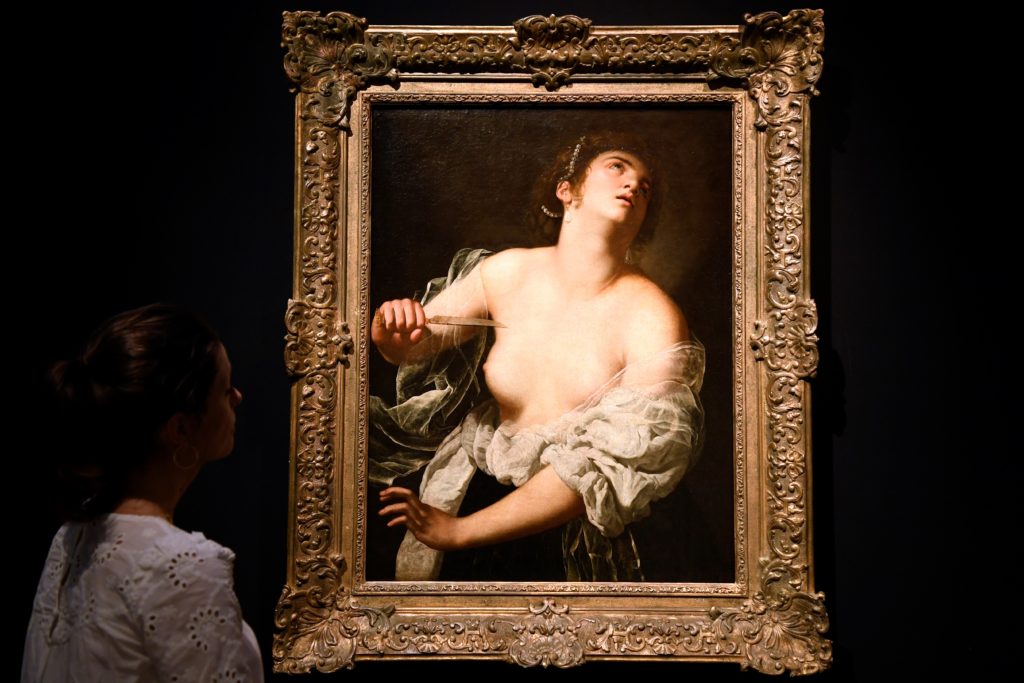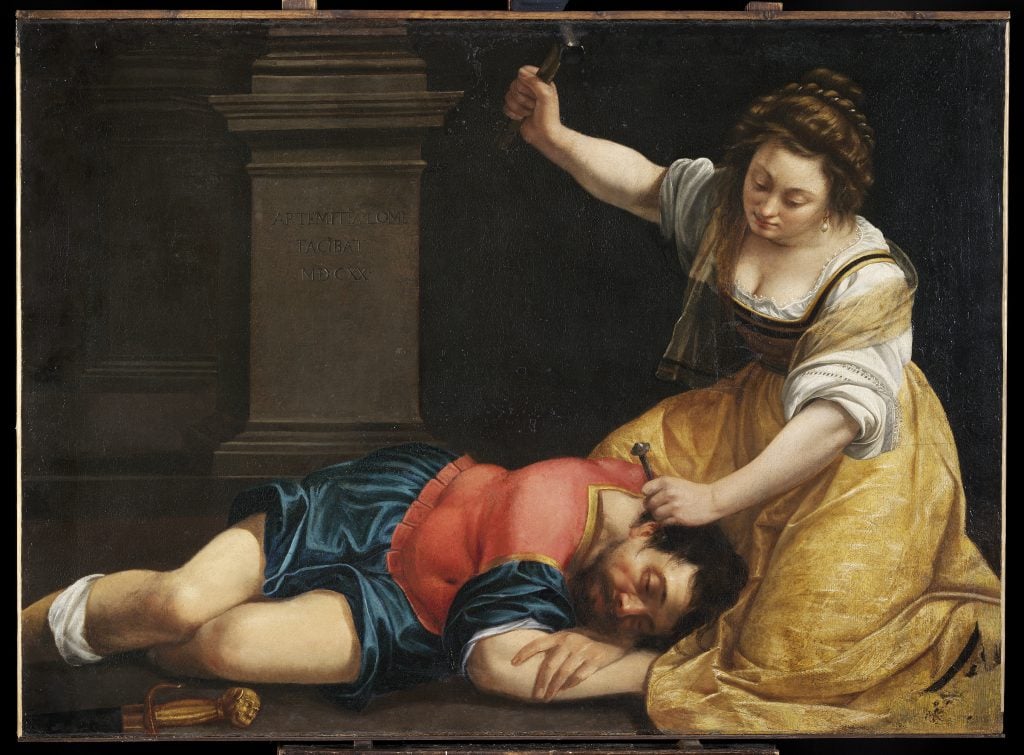On View
The Getty Museum Just Acquired the Recently Rediscovered Artemisia Gentileschi Painting That Set a New Record at Auction
The work will go on view when the museum reopens this spring.

The work will go on view when the museum reopens this spring.

Caroline Goldstein

The Getty Museum in Los Angeles has made a major acquisition: Artemisia Gentileschi’s Lucretia (ca. 1627), a striking portrait of an ancient Roman noblewoman pictured moments before she stabs herself with a dagger.
The painting had languished in a private collection in Lyon, France for decades before appearing at auction in 2019, when it sold for a eye-popping $5.3 million at Paris-based Artcurial, six times its high estimate. The previously little-known work set a record at auction for Gentileschi. In a statement preceding the sale, the auction house said that Lucretia was “worthy of the great museums of the world”; now it has been proven correct.
The Getty acquired the painting from an anonymous collector. A spokesperson did not respond to a query about whether the acquisition was a gift, purchase, or mix of the two. Gentileschi works are hard to come by—there are only 40 in public collections, a small portion of which are in the United States.
The subject of this work—the noblewoman who sought to die by suicide after being raped, according to legend—is particularly resonant for Gentileschi, who was raped by her teacher Agostino Tassi at the age of 17. The horrific experience set the tone for Artemisia’s chosen subjects, which often depict strong women who have suffered sexual violence.
“Her achievement as a painter of powerful and dramatic history subjects is all the more remarkable for the abuse and prejudice that she suffered in her personal life—and which is palpably present in Lucretia’s suicide, and other of her paintings where the central protagonist is a wronged or abused woman,” Getty director Timothy Potts told the Los Angeles Times, adding that the painting “will open a window for our visitors onto important issues of injustice, prejudice, and abuse that lie below the beguilingly beautiful surfaces of such works.”

Artemisia Gentileschi, Jael and Sisera (1620). © Szépmüvészeti Múzeum / Museum of Fine Arts, Budapest.
While the rape trial of her teacher made headlines during her life and would go on to define Gentileschi’s story for centuries, recent exhibitions and scholarship have expanded our understanding of her work and identity. London’s National Gallery organized a show of 29 paintings by Gentileschi, its first-ever exhibition dedicated to a female artist, which closed in January 2021. The artist’s turbulent life is also the subject of a forthcoming scripted TV series from ViacomCBS International Studios.
In 2016, the Getty acquired a work by Artemisia’s father and teacher, Orazio, depicting Danaë (ca. 1621), which Potts described at the time as a “masterpiece of 17th-century Italian painting.” The Getty also owns Orazio’s Lot and His Daughters, which has been a hallmark of the museum’s Baroque holdings since 1998.
In an announcement, the Getty museum noted that Artemisia Gentileschi’s work will be on view when the institution reopens “in the coming weeks,” though a concrete date has not been set. Los Angeles museums were recently given the green light to reopen, following those in San Francisco and the rest of the Bay area, after having been closed for nearly a year.